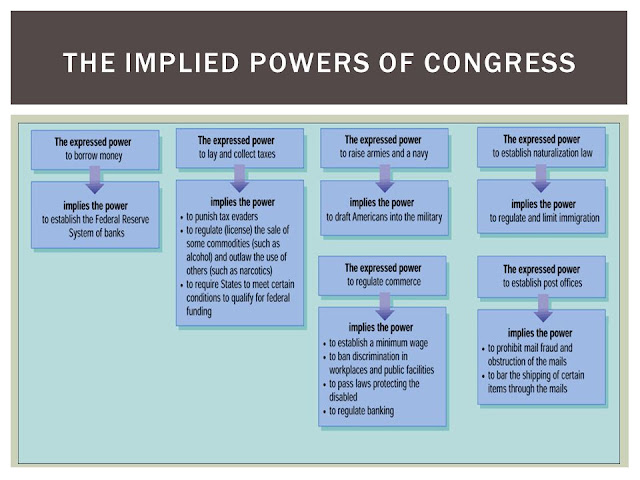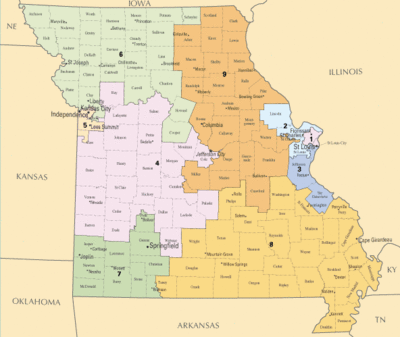READING: 309-325 in Edwards
UNIT TWO IDENTIFICATION TERMS
________________________________________________
Today's Essential Question: How do the enumerated and implied powers of Congress impact the policymaking process?
Learning Standards:
________________________________________________
Today's Essential Question: How do the enumerated and implied powers of Congress impact the policymaking process?
Learning Standards:
- CON-3.A: Describe the different structures, powers, and functions of each house of Congress.
- CON-3.A.4: The enumerated and implied powers in the Constitution allow the creation of public policy by Congress, which includes:
- Passing a federal budget, raising revenue, and coining money, declaring war and maintaining the armed forces
- Enacting legislation that addresses a wide range of economic, environmental, and social issues based on the Necessary and Proper Clause
Congressional Powers
Most of the powers of Congress are found in Article 1, Section 8. Today we will classify the various powers of Congress and review/define several terms associated with Congressional powers.
1. DEFINE:
- enumerated (expressed) powers
- implied powers
- necessary and proper clause (elastic clause)
2. APPLY
For each of the following, decide first if Congress has the power (either enumerated or implied). If they do have the power, is it enumerated or implied? What specific clause gives them that power? Remember, all implied powers still have to be connected to an enumerated power.
- prohibit sending weapons through the mail
- establish the Federal Reserve System (national bank system)
- institute a draft
- nominate a judge
- place a tax on alcohol
- establish a minimum wage
- create the IRS
- fire the Secretary of Defense
- issue US savings bonds
- ban discrimination in the workplace
- grant citizenship to "Dreamers"
- create a 40 hour work week
CLASSIFY: Create a 4 box grid (or other organizational chart like 4 columns) and classify the enumerated powers of Congress according to the following categories:
- economic
- military/foreign
- other (ex. weights & measures)
- non-legislative (ex. impeachment)
You should have a minimum of 3-4 items for each category.
Additional Readings & Videos:
Congressional Power (ThisNation.com)
Powers of Congress (USHistory.org)
Explanation of Enumerated Powers (Constitution Center)
Congressional Power (ThisNation.com)
Powers of Congress (USHistory.org)
Explanation of Enumerated Powers (Constitution Center)












